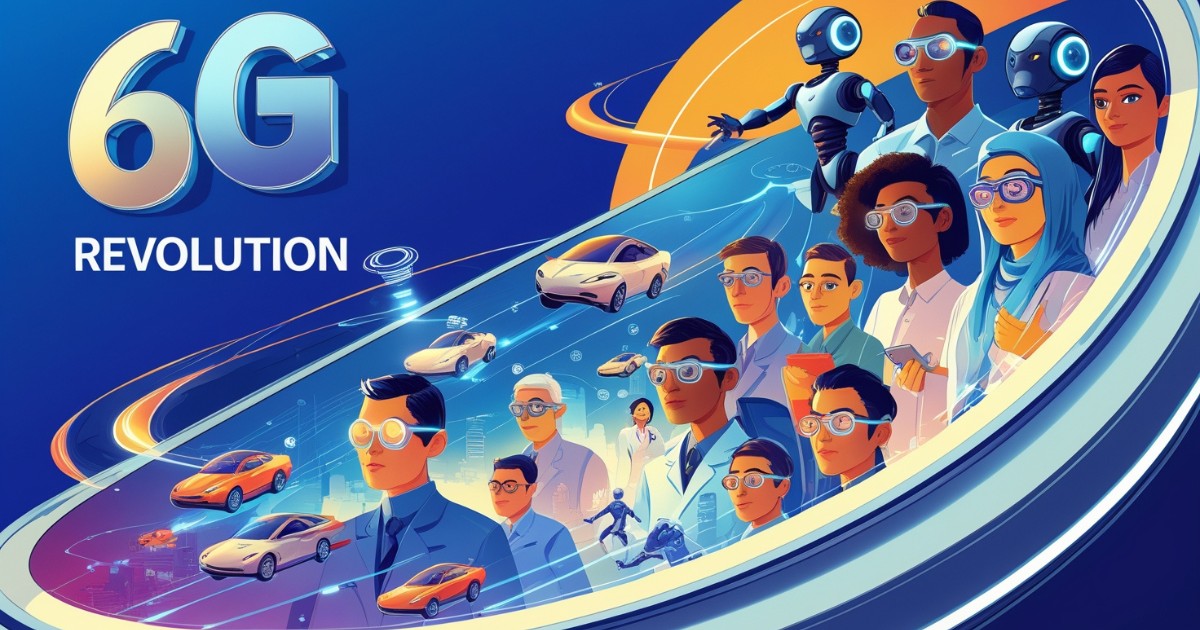Ever wondered how fast the internet could really get? 6G speed, which could be 100 times faster than 5G. Imagine downloading 10 full length movies in the blink of an eye. Sounds like science fiction, right? But it’s closer than you think. Let’s dive into what 6G means for the future of technology and how it could transform our lives.
What is 6G and how does it work
6G stands for 6th generation wireless technology, the next step after 5G. It promises super-fast speeds, near-zero lag, and the ability to handle millions of devices simultaneously. As our world becomes more connected with smartphones, smart homes, self-driving cars, and more our networks need to be stronger and faster to keep up.
While 5G has already amazed us with speeds of up to 20 gigabits per second, 6G could take that to a whole new level, reaching 1 terabit per second. That’s 50 times faster than 5G. Imagine downloading your favorite movies, streaming high-quality videos, and playing online games all at the same time without any lag. Mind-blowing, right?
How is China leading in 6G development?
China has been at the forefront of 6G research since 2019. They’ve already launched a test satellite to experiment with 6G technology in space and built a field test network. Major telecom companies like China Unicom have hinted at early 6G applications by 2025, with a full rollout expected by 2030. This means some of us could experience 6G before the decade ends.
China is also working with the International Telecommunication Union to establish global standards for 6G, ensuring a smooth rollout. Their rapid progress positions them as a global leader in this space, potentially shaping the future of telecommunications.
How fast is 6G compared to 5G?
The secret lies in the technology behind it. While 5G uses millimeter waves to transmit data, 6G aims to use terahertz frequencies. These frequencies are much higher, allowing for faster data transfer. Think of it like upgrading from a two-lane road to a superhighway where cars can zoom without traffic.
Researchers have already achieved data transmission speeds of 206.25 gigabits per second using terahertz waves. When fully developed, 6G could reach speeds of 1 terabit per second, making it 100 times faster than 5G.
What are the benefits of 6G technology?

Beyond lightning-fast downloads, 6G will revolutionize several areas of our lives:
1. Augmented Reality (AR) and Virtual Reality (VR):
With near-zero latency, AR and VR experiences will become smoother and more immersive. Imagine virtual shopping, gaming, or remote work where interactions feel almost real, no matter the distance.
2. How will 6G impact smart cities:
6G will enable self-driving cars to communicate with each other to avoid accidents, smart traffic lights that adjust in real time, and homes that respond instantly to your needs whether it’s adjusting the temperature, lighting, or even ordering groceries.
3. What are the applications of 6G in healthcare:
Doctors could perform remote surgeries with real-time data and no noticeable delay. Health monitoring could also become more advanced, with biosensing technology transmitting data over the network.
What are the challenges of 6G networks?
As exciting as 6G sounds, it comes with its share of challenges:
1. Cybersecurity:
With more devices connected to 6G like smart fridges and wearable health devices hackers will have more entry points to exploit. The massive amounts of data transmitted over 6G networks will also be a prime target for cyberattacks.
2. AI Vulnerabilities:
6G will rely heavily on AI for network management and security. If these AI systems are compromised, it could lead to major disruptions, such as hacking self-driving cars or healthcare systems.
3. Network Failures:
While AI improves efficiency, it’s not foolproof. Algorithm errors or adversarial attacks could cause network failures, raising concerns about reliability.
How fast is 6G compared to 5G

- Speed: 6G could reach 1 terabit per second, compared to 5G’s peak of 20 gigabits per second.
- Latency: 6G aims for near-zero latency, making real-time applications like remote surgeries and autonomous vehicles more feasible.
- Capacity: 6G will handle more devices and data-heavy applications, supporting the growth of smart cities, the Internet of Things (IoT), and even space exploration.
When will 6G be available worldwide?
While early 6G applications are expected by 2025, the commercial rollout is likely around 2030. It’s a long-term project, but one that promises to redefine connectivity.
What is the future of 6G in the global economy?
The global 6G market is projected to reach a staggering $340 billion by 2040. China’s leadership in 6G development, supported by government initiatives and rapid infrastructure growth, positions the Asia-Pacific region as a hub for innovation. This dominance will not only drive economic growth but also shape global standards and applications across industries like healthcare, transportation, and entertainment.
Will 6G Be Safe?
To ensure 6G’s security, experts emphasize the need for advanced encryption, new security protocols, and consistent monitoring. Collaboration between governments, tech companies, and international bodies will be crucial to establishing global standards and regulations.
The Future of 6G
6G is coming, and it’s set to revolutionize everything from how we interact with technology to how industries operate. With faster speeds, lower latency, and the potential for groundbreaking applications like AI, autonomous vehicles, and smart cities, 6G promises to push the boundaries of what we thought was possible.















